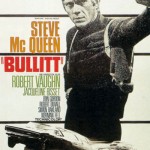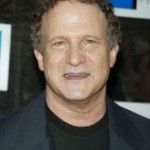Drive/2011/100 min.
By Michael Wilmington
“Drive” is a gut-twisting LA action movie, stripped to the bone, but also drenched with visual style. It’s about a driver played by Ryan Gosling who falls in love with the woman down the hall in his building, nervous Irene (Carey Mulligan), whose husband Standard (Oscar Isaac) just got out of jail and is being forced into another heist by shady moneymen Nino (Ron Perlman) and Bernie (Albert Brooks).
The show is full of killingly well-executed action scenes, sharp acting, ironic dialogue and ultra-snazzy visuals – all of which won Nicolas Winding Refn the Best Director prize at the last Cannes Film Festival. Hossein Amini wrote the script based on James Sallis’ novel.
It’s a movie built largely out of our memories of other movies, but that’s not necessarily bad. We know where this movie is coming from as soon as we know Gosling’s character has no name but The Driver – just like Ryan O’Neal in Walter Hill’s 1978 “The Driver.”
Neo-noir is this picture’s middle name, and its forebears include “The Driver” (of course); John Boorman’s 1968 “Point Blank” with Lee Marvin; Peter Yates’ 1968 “Bullitt” with Steve McQueen; and Michael Mann’s outlaw movies “Thief” (1980) and “Heat” (1995). As you’d expect from a movie with that kind of lineage, “Drive” begins with a great chase and gives us a little dip under Gosling’s opaque exterior by letting us know that he’s a movie stunt driver by day and a getaway driver at night. (He allows his robber/clients only five minutes to get back to his car).
He’s also a prospective race car driver, for whom his auto shop owner/patron Shannon (Bryan Cranston) wants to get sponsorship. Shannon turns to the very same criminal financiers, Nino and Bernie, who want Standard to pull a job for them, for which Standard wants The Driver to drive. And The Driver does, mostly because he’s in love with Standard’s wife, Irene, and his little son Benicio (Kaden Leos).
 The movie alternates its always-thrilling action scenes with more emotional character stuff – including a brilliant turn, Oscar-worthy really, by Brooks as the falsely good-natured gangster and ex-movie producer Bernie. (In the ’80s, says Bernie, he did action stuff that some critic called “European.”) The classy cast sometimes seems to be getting paid for holding it all back, especially Gosling, whose minimalism here makes vintage Eastwood or McQueen look like John Barrymore.
The movie alternates its always-thrilling action scenes with more emotional character stuff – including a brilliant turn, Oscar-worthy really, by Brooks as the falsely good-natured gangster and ex-movie producer Bernie. (In the ’80s, says Bernie, he did action stuff that some critic called “European.”) The classy cast sometimes seems to be getting paid for holding it all back, especially Gosling, whose minimalism here makes vintage Eastwood or McQueen look like John Barrymore.
As the film goes on, it gets more violent. The violent scenes are short but extremely bloody. Since the movie plays some of its carnage with razor-sharp comic timing (especially Brooks’ scenes), it becomes more and more disturbing as well. There’s something sinister and icily detached about that comic violence. “Drive” suggests a world where brutality is rampant, where greed rules, where immorality thrives.
Though Refn may not have really made a classic neo-noir, it’s a very good effort. A little more Albert Brooks maybe. Not too much. Five minutes or less.
Albert Brooks photo by Jim Spellman/WireImage/The New York Times











From FNB readers